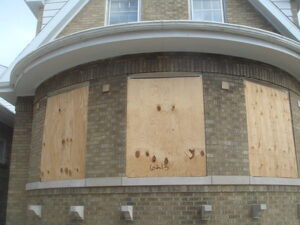Last week, Monroe County Community college opened a student food pantry. The college acted after a student survey showed that 40% of MCCC students ran out of money at least three times in the last year. Financial instability is a leading cause of food insecurity among young adults.
According to Food Gatherers, more than 42,000 Washtenaw County residents are food insecure right now. Nearly 6,100 of those people are children under the age of 18. As a percentage, 11.5% of Washtenaw County residents are food insecure. The USDAdefines food insecurity as “a household-level economic and social condition of limited or uncertain access to adequate food. The USDA is responsible for both food production and emergency food distribution.
Food isn’t the only necessity that community college students struggle to obtain. In October, Long Beach City College in Long Beach, CA opened 15 spaces in its parking garage to provide homeless students who are living in their cars a safe place to park and sleep overnight. The students can occupy the parking garage between 10:00 PM and 7:00 AM daily. While in the garage, they can use restrooms in the structure, as well as the campus Wi-Fi network. In addition, the school will provide these students with early morning access to shower facilities on campus.
Allowing students to use the garage is part of a pilot program LBCC is operating through June 2022. The school estimates that it currently enrolls about 70 students who do not have permanent living spaces. LBCC believes that most of its homeless students live in their cars. As part of the program, LBCC will also connect students with social services to help them locate appropriate permanent housing.
Food insecurity shouldn’t overshadow other basic needs
Still other higher education institutions, like Riverside Community College District, in Riverside, CA operate clothing closets, where students can find career-appropriate apparel. Clothing closets serve a dual purpose. Clothing and textile manufacturing are particularly carbon intensive. Recycling lightly worn clothing and other textiles can reduce a community’s carbon footprint while meeting the basic needs of income-limited people.
Washtenaw Community College administrators labor under the impression that WCC is in a “rich community.” The median income in Ann Arbor households in 2019 was $32,412. That’s surprisingly low. In comparison, the median household income in Ypsilanti in 2019 was $20,820. Even though Ann Arbor’s median household income in 2019 was 55% higher than Ypsilanti’s, there appear to be a lot of not-rich households in Ann Arbor, too.
It is easy to see why WCC administrators who do not live in Washtenaw County characterize Ann Arbor as rich. Their regrettably myopic focus on Ann Arbor is likewise understandable. Unfortunately, the county’s most income-challenged residents don’t live in Ann Arbor. Someone more familiar with Washtenaw County would know that Ann Arbor has not realized its decades-long plans to provide affordable housing inside the city limits.
And Washtenaw Community College administrators should know that WCC’s district encompasses nearly the entirety of Washtenaw County – not just Ann Arbor. It is not sufficient to look past the rest of the County to focus on Oz.
The WCC administration should recognize the level of insecurity among its student population with regard to basic needs. I don’t expect WCC Administrators to address students’ basic needs. But they should at least recognize who they impact when they eliminate services like childcare or divert operational dollars to non-necessities like the Health and Fitness Center.
Photo Credit: F. Delventhal , via Flickr
























